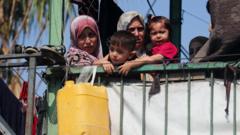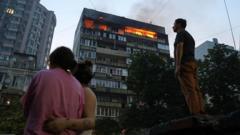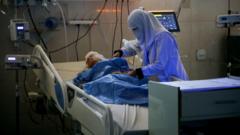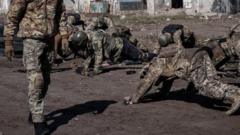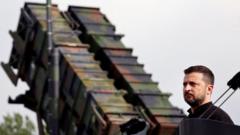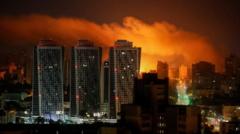Despite aggressive maneuvers and substantial territorial claims by Russia, Ukrainian armed forces continue to demonstrate resilience, particularly in areas like Pokrovsk and Kostyantynivka. The ongoing conflict sees Russia aiming to stretch Ukrainian defenses thin while struggling with high casualty rates and logistical challenges.
Ukraine's Sturdy Resistance Holds Against Intensifying Russian Offensive
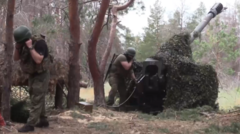
Ukraine's Sturdy Resistance Holds Against Intensifying Russian Offensive
As Russian forces escalate their attacks from three fronts in Ukraine, local military experts highlight the determined resistance of Ukrainian troops in critical regions.
Russia's military efforts in Ukraine have ramped up significantly, targeting three strategic fronts even as they encounter staunch resistance from Ukrainian forces. Recent data from the DeepState monitoring website indicates that Russian troops managed to claim about 556 square kilometers (215 square miles) of territory last month, marking their largest land gain this year. This area is comparable in size to the city of Chicago and aims to sever critical supply routes for Ukrainian troops while establishing a buffer zone along the northern borders of Ukraine.
However, the pace of the Russian advance is alarmingly slow. Estimates suggest that, at their current rate of progress, it would take over 70 years to conquer the entirety of Ukraine. Most of the fighting has unfolded in three primary areas: the northeastern Sumy region, the eastern cities of Pokrovsk and Kostyantynivka, and a newly opened front west of Pokrovsk. Despite an initial push of approximately 10-12 kilometers (6-7.5 miles) into Sumy, Russian advances here have hit a brick wall due to fierce Ukrainian resistance.
Russian President Vladimir Putin has expressed intentions to create a protective buffer zone after Ukrainian forces reclaimed territory in Kursk last summer. Joint efforts from North Korean troops have fortified Russian positions, but the ground battles have become entrenched in skirmishes over small border villages that continue to change hands. Without a significant influx of reinforcements, Russian troops are unlikely to make further substantial progress.
Further to the north, Russian units assert that they have crossed into Kharkiv, claiming a border village but without adequate troop support for any meaningful gains. Military analysts believe that this multi-front offensive requires Ukraine to stretch its defenses along the extensive 1,200-kilometer front line, potentially diverting resources from critical combat zones.
One prime target for Russia is Pokrovsk, identified as a strategic hub in eastern Ukraine, where reports suggest that approximately 111,000 Russian troops are currently concentrated. However, sizeable troop movements are easily detected by Ukrainian drones, leading to a reliance on smaller infantry units for persistent assaults on Ukrainian positions. This "creeping offensive" strategy is aimed at exhausting Ukrainian resources, although it comes at a heavy price, with Ukrainian generals estimating Russian casualties at over 1,000 soldiers daily.
Military officials assert that Russia seeks to encircle Ukrainian forces in the area around Pokrovsk and Kostyantynivka, compelling a retreat. Current advancements between these cities have stalled, and the most significant Russian territorial claims have been to the west of Pokrovsk in what the Ukrainian military designates as the Novopavlivske direction.
In this area, rapid Russian advances initially caught Ukrainian defenses off guard, with some military observers suggesting the operations posed a significant threat. However, Ukrainian officials counter claims of major breakthroughs, instead reporting a swift response to minor incursions intended for propaganda purposes.
As the conflict rages on, Ukrainian forces are under increasing pressure, with consistent drone attacks from Russian troops attempting to cut supply lines. Staff Sgt. Viktor Pyasetskyi of Ukraine’s 93rd brigade indicated that many previously safe routes for transport of food and ammunition are now perilous, complicating essential logistics.
Additionally, drone strikes have begun to have a psychological impact, targeting civilian infrastructure to undermine morale among Ukrainian citizens. Despite the sound of incoming drones, Staff Sgt. Pyasetskyi reported surviving an attack while voicing the challenges his unit faces in maintaining operational capability amidst constant aerial threats.



